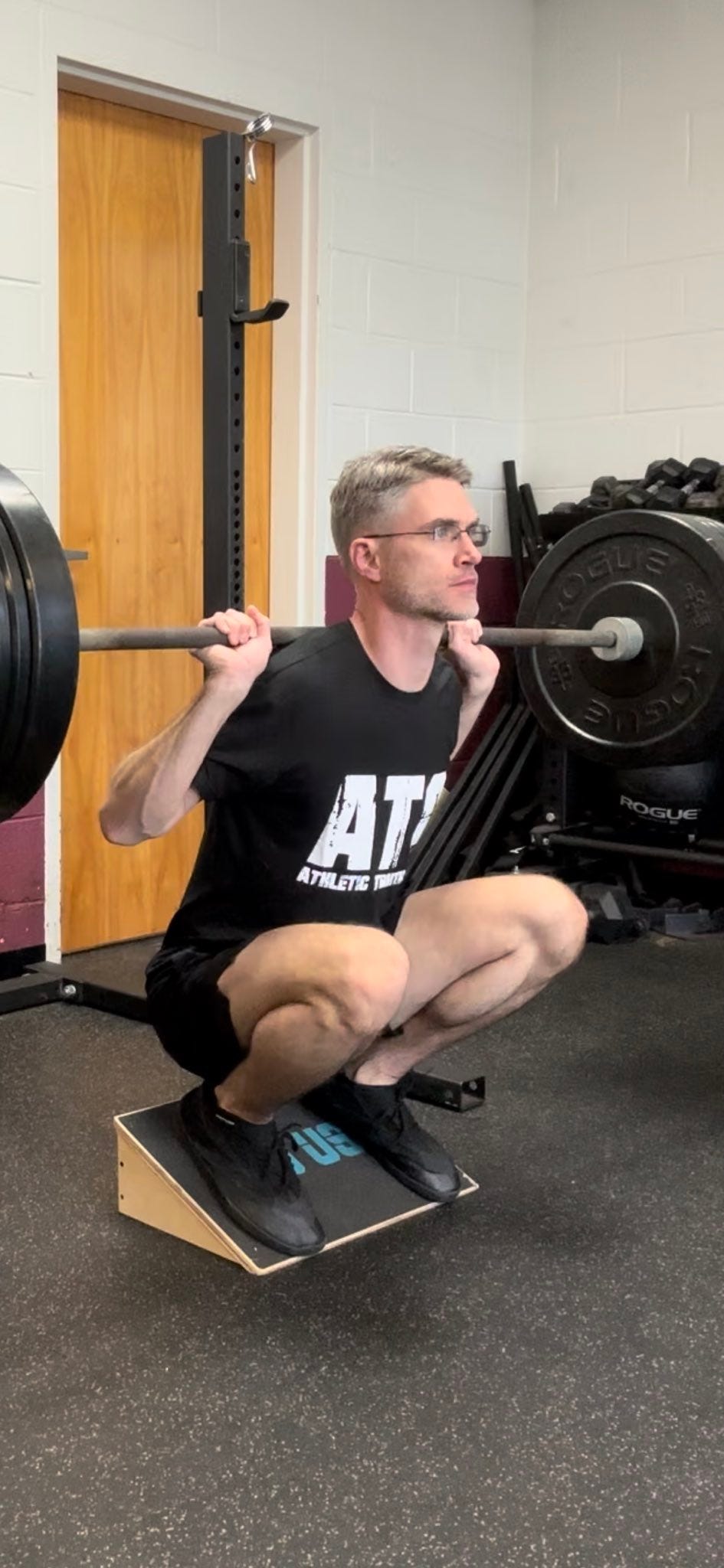Squatting is a natural human ability.
Every child can hang out in a deep squat, and common sense would suggest that our ancestors have been deep squatting for thousands of years.
But modern lifestyle, excess sitting, and outdated, incorrect ideas about no “knees over toes” have caused many of us to lose this ability.
If full knee bend hurts your knees, the answer is NOT to avoid it. But forcing yourself into a painful position is not productive either.
This is why using regressions like the one below (allowing you to find your pain-free level) are so important.
Understand that full knee bend creates pressure and motion across the cartilage which stimulates the production of synovial fluid in the joint. Synovial fluid lubricates the area and provides nutrients that help keep the knee cartilage healthy.
So the trick is to find a level that allows you to squat in a full range of motion WITHOUT pain and then to patiently progress from there.
As this 2013 medical study study states, “Contrary to commonly voiced concern, deep squats do not contribute increased risk of injury to passive tissues. (Instead) the deep squat presents an effective training exercise for protection against injuries and strengthening of the lower extremity.” http://pubmed.ncbi.nlm.nih.gov/23821469/
TL:DR Full ROM squatting helps keep your knees heathy and pain-free, BUT only if you can perform full ROM squats pain-free.






